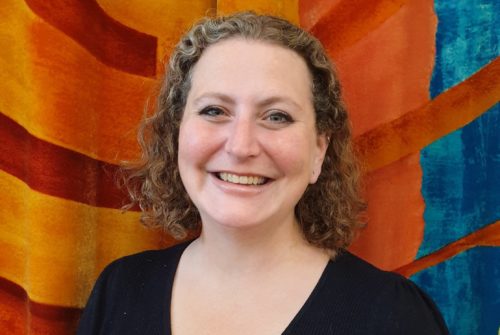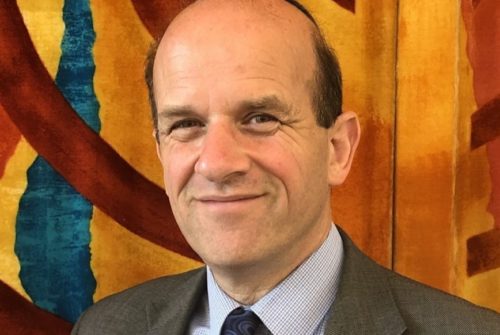Thirty five years ago I was interviewed to become a student Rabbi at Leo Baeck College. The system of interviews has barely changed since then as a cohort of applicants spend three days with a battery of interviews and presentations with a series of Rabbis and Cantors, lay leaders and community professionals, even a psychotherapist to establish if the Rabbinate is likely to be a the right career for the applicant to dedicate five years of study and practice to. It’s a very thorough process.
I remember like it was yesterday the first of these interviews on the first day of the process in 1990. I was interviewed by two Rabbis I had only known by name at that point, but who are now dear colleagues, Rabbi Colin Eimer and Rabbi Tony Bayfield. Their opening question, the first I was asked, and I must apologise to anyone here for whom this a real experience, was this – ‘You are a Rabbi who is in your Synagogue office. A woman walks in from your congregation. She tells you that her child has just died in a dreadful accident. She asks you why God could allow this to happen. What do you say?’ . Sadly I know that there will be times like this in the rabbinate. I am also not sure that thirty-five years later I could respond to this question any better than the twenty five year old me attempted to. But now I know that our Parasha today gives me an important response that I carry in my heart.
The portions of Tazria and Metzora, combined today, address something absolutely inevitable about being human and about being alive. Vulnerability. Tazria will speak about childbirth, it will speak about the natural functioning of our bodies, it speaks about diseases which affect the human body, it speaks about fungoid attacks on cloth and homes. In short it is about the vulnerability of life which, in Torah understanding, takes the person living with any of the issues the portion addresses, temporarily away from the Mischcan and holy service.
Most importantly and certainly in the part of the portion that Cantor Tamara and I just read and then in the Haftarah portion about the healing of Naaman from leprosy, the Torah talks about how to ensure that those who suffer can be properly incorporated back into the community, once what they are suffering from is no longer contagious or seen as virulent.
I am always impressed when I read Tazria-Metzora that it is the Cohen HaGadol who is meant to work with the person with leprosy or the person with another debilitating condition in the definition of the Torah, to bring them back into the community. They are in close contact with rituals that demonstrate that since the High Priest himself is ready and willing touch that person – no one else should be scared or or exclude them. In the part of the portion which I read (Leviticus 14:14) two cohanim, two priests, touched the person healed from leprosy from head to toe – on their ear lobe, thumb and big toe. Being vulnerable should not mean being shunned.
Tazria-Metzorah is literally the portion in the middle of the Torah, a verse in Tazria, Leviticus 13:33, is the middle verse of the entire Torah. In this verse the Cohen is helping the leper get ready for re-entering the community. The Torah began with Adam – possibly at the point of creation of an immortal human. It ends with the death of Moses at the maximum age a human can actualy reach, 120. It’s midpoint is the way that our bodies let us down, are vulnerable, don’t function in an ideal way, can have accidents, can get ill, can heal and can survive some very tough threats.
Because we are all vulnerable our Rabbis taught that caring for other people’s vulnerabilities is the most sure way to live up to being a human being in the image of God. Rabbi Hama ben Hanina said in Talmud Sotah (14a) What does it mean when is says in the Book of Deuteronomy (13) Acharei Adonai Eloheychem telchu You shall walk after the Eternal your God. He answers his own question – just as God clothed the naked in the Garden of Eden (Genesis 3) so should you clothe the naked. Just as God visited Abraham when he was recovering from his circumcision (Genesis 18) so you should visit the sick. Just as God comforted Isaac after his father’s death (Genesis 25) so should you comfort mourners. And just as God buried Moses (Deuteronomy 34) so should you be present at a funeral to help. Rabbi Hama ben Hanina’s question was not why do any of these vulnerabilities happen, but what can I, what can everyone, do to help and to support their fellow human being.
My favourite and most meaningful text on this is in the Talmud Nedarim 40a. It is a text that talks about how best to visit the sick. It talks about praying with people, sweeping the floor and making sure they are in hygienic conditions, about doing so at a sensible time for the sick person and even where to sit in the room so that it is comfortable for the ill person. The most wonderful line is for the me the one that rings the most true. ‘One who visits a sick person takes away one sixtieth of their pain.’ No you don’t fully heal them, but it really matters that you are there. And also it matters to the people who love them that you are there and you take away 1/60th of their pain too. Not enough to stop the vulnerability but enough to make it that little bit more bearable.
Rabbi Michael Strassfeld created the very popular Jewish Catalogue series which told us all about Judaism and Jewish traditions worldwide and across denominations before the dawn of the internet. He also wrote a book called ‘The Book of Life’. In this book he compared our lives to the whole Torah – from the creation of Adam to the death of Moses. Genesis – our beginnings as a young child building our basic skills, Exodus – our taking our steps out from our families and carers as we begin to find our own way in the world. Leviticus – this book of Torah for this week – the book of rules as we learn the way the world works. The Last book is Deuteronomy where we look back on our lives knowing we are reaching the final chapters, with the benefit of a life full of wisdom. But what about the book of Numbers – the fourth book.
This says Rabbi Strassfeld is best understood as the part of life where we can be as the Hebrew name of the book implies – B’midbar – in the wilderness. Its that part of life where we are no longer needing to strike out, where we know the rules – but it is of course the time when when we can feel a bit lost, where our vulnerabilities come perhaps to the fore as our bodies age and our energy levels decrease a bit. Like the Israelites we cross a desert and Rabbi Strassfeld asks what do we need to cross a desert? He answers three things: transportation – a caring community to carry us, water – which is joy and gratitude and food which is compassion.
That’s how we make it through this life of vulnerability. We carry each other, we make times of joy and appreciation and we care.
I know that for the EHRS Choir that has been so important. You have supported each other as a caring community. Those of blessed memory who are no longer with you have always known that you can count on each other for support. Your water has been your music which gives you joy and gratitude for your God given talents as singers. Your food has been your compassion for each other and being there for each other. We can all learn from you what it means to be a great chevrah – a group of people bound together through mutual care.
No, no one can honestly answer why tough and even tragic things happen in life. All we can answer is whatever happens I will be there for you ready to help and support, and if the world works as Judaism says it should, I can count on you being there for me.


